Tasty Carnivore Lunch Ideas for Easy Meal Planning
Primal Edge Health participates in the Amazon Services LLC Associates Program and other affiliate programs and therefore, may collect a share of sales or other compensation from the links on this page. This comes at no additional cost to you, and all the prices and availability are accurate at the time of publishing.
Are you looking for carnivore lunch ideas that are easy, filling, delicious, and affordable? I’ve got the recipes that check all those boxes.
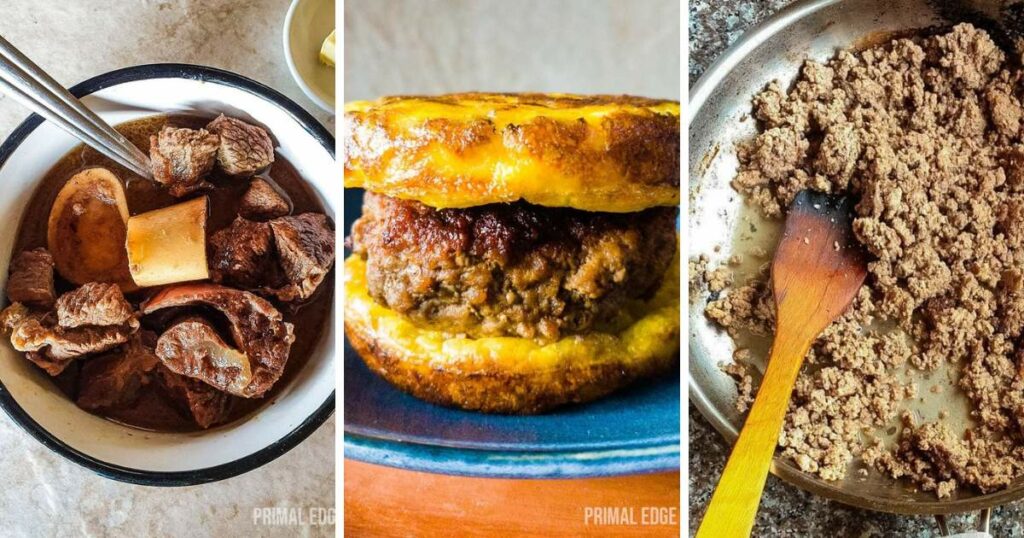
My transition into the carnivore lifestyle didn’t happen overnight, and let me tell you, it was harder than I expected it to be. Sure, I was prepared for the physical and mental effort it would take to say goodbye to carbs, but what I didn’t expect was how challenging it was to keep meals consistent with the diet yet interesting.
Eventually, I grew into the habit and now enjoy cooking and preparing carnivore meals. If you’re still struggling to make delicious, high-quality yet affordable lunches, you’ve come to the right place. Let’s dive into my top carnivore lunch ideas, tips, meal-prepping strategies, recipes, and more.
Table of Contents (click to view)
Delicious Carnivore Diet Recipes for Lunch
Now, we’ve reached the best part: carnivore lunch ideas! I have tons of carnivore recipes on the blog, but I’ve handpicked a few that would work best for meal-prepping or easy cooking for a quick lunch.
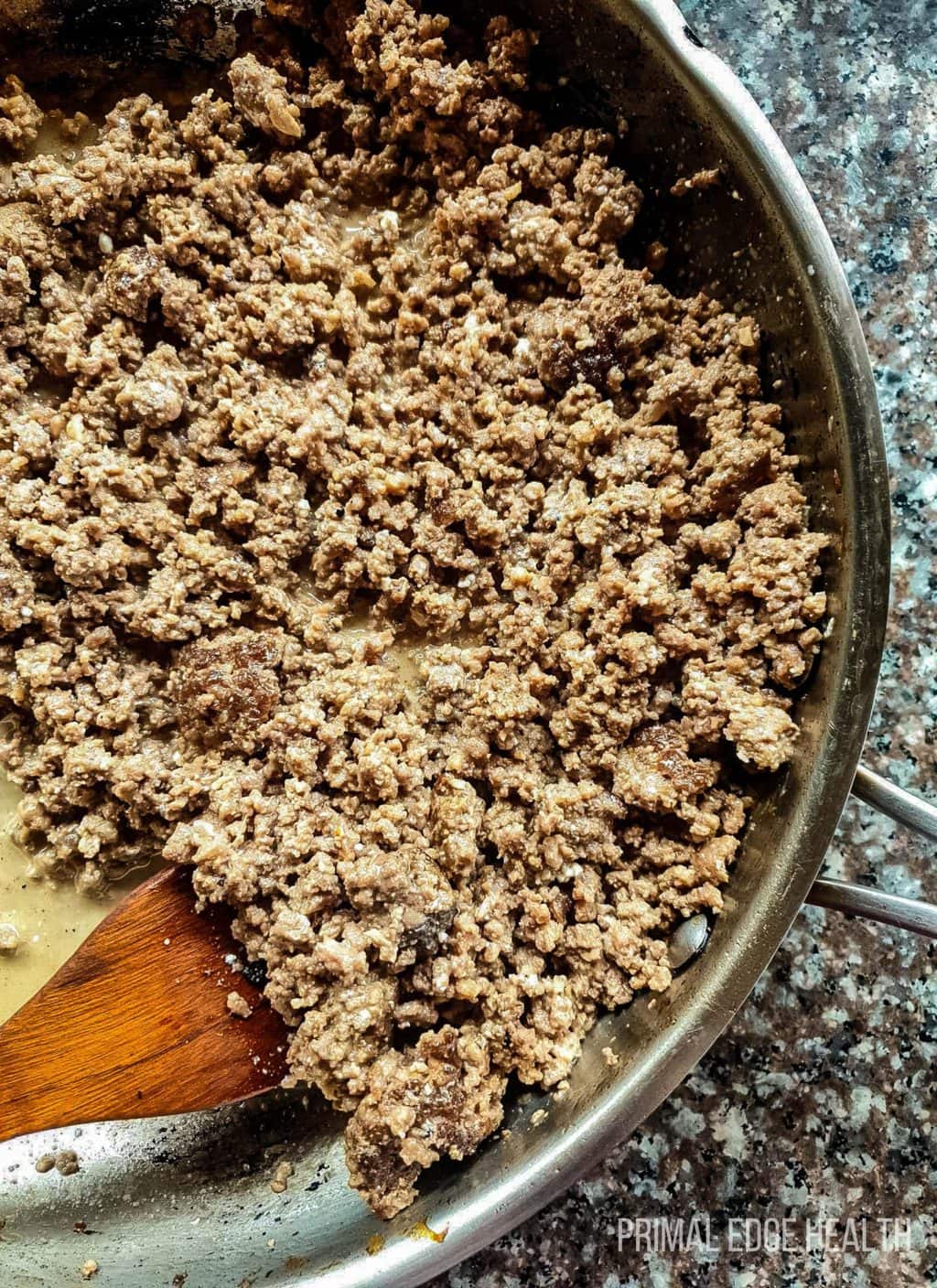
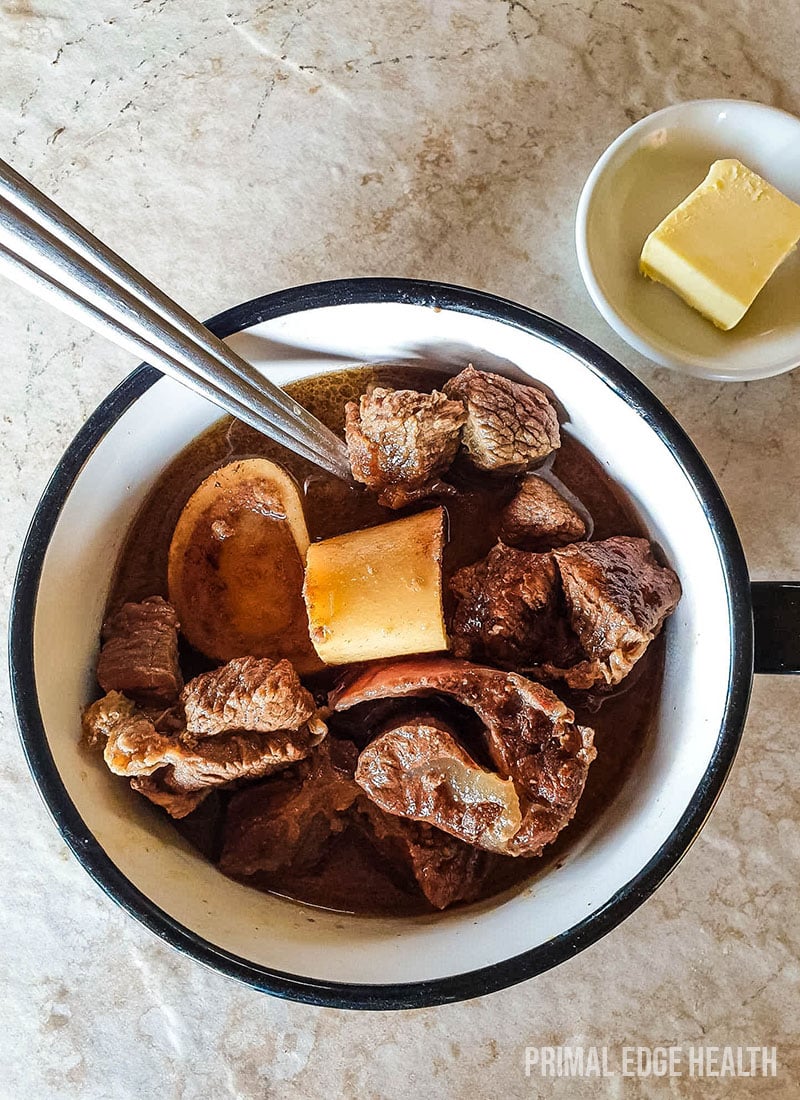
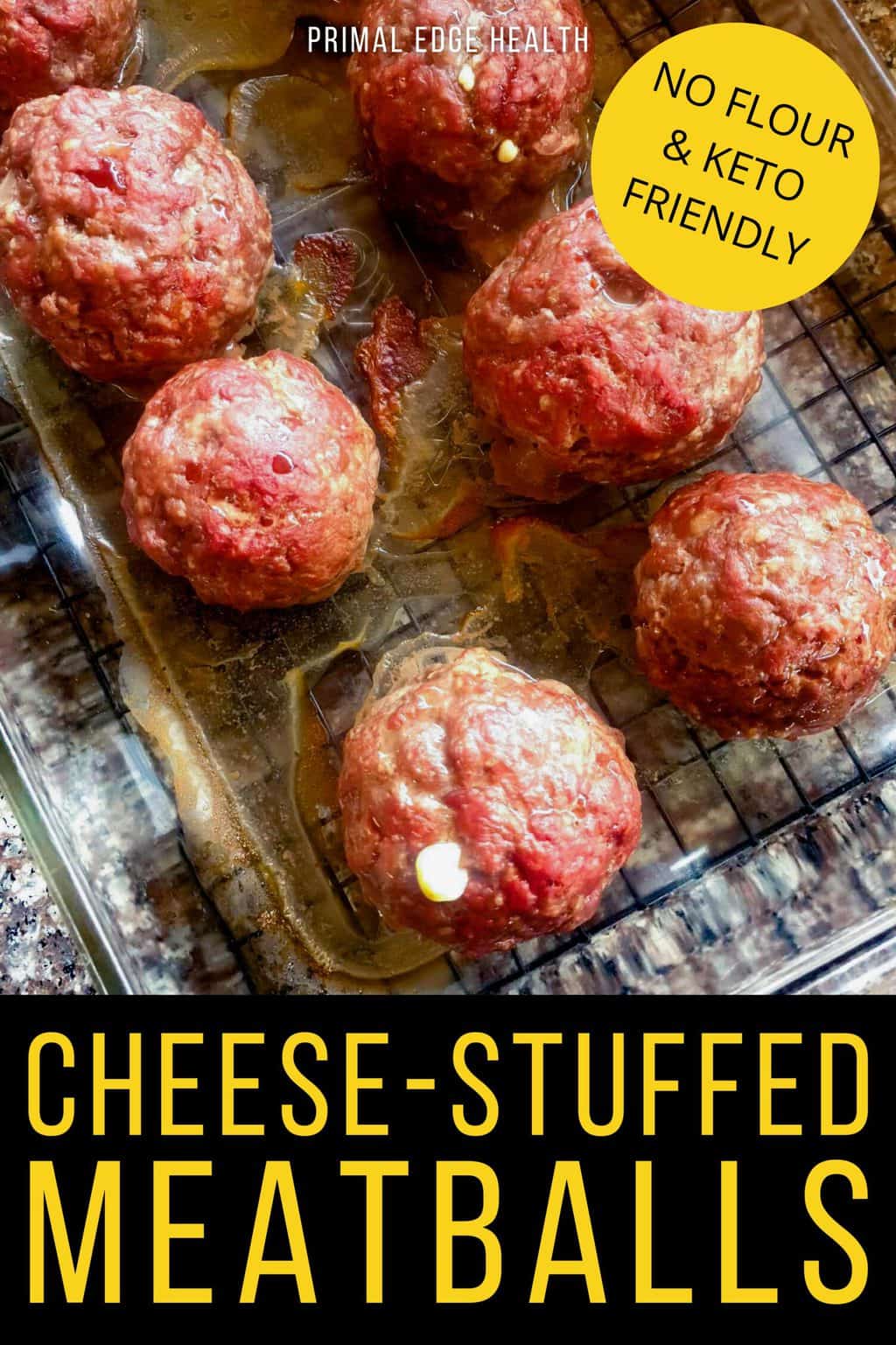

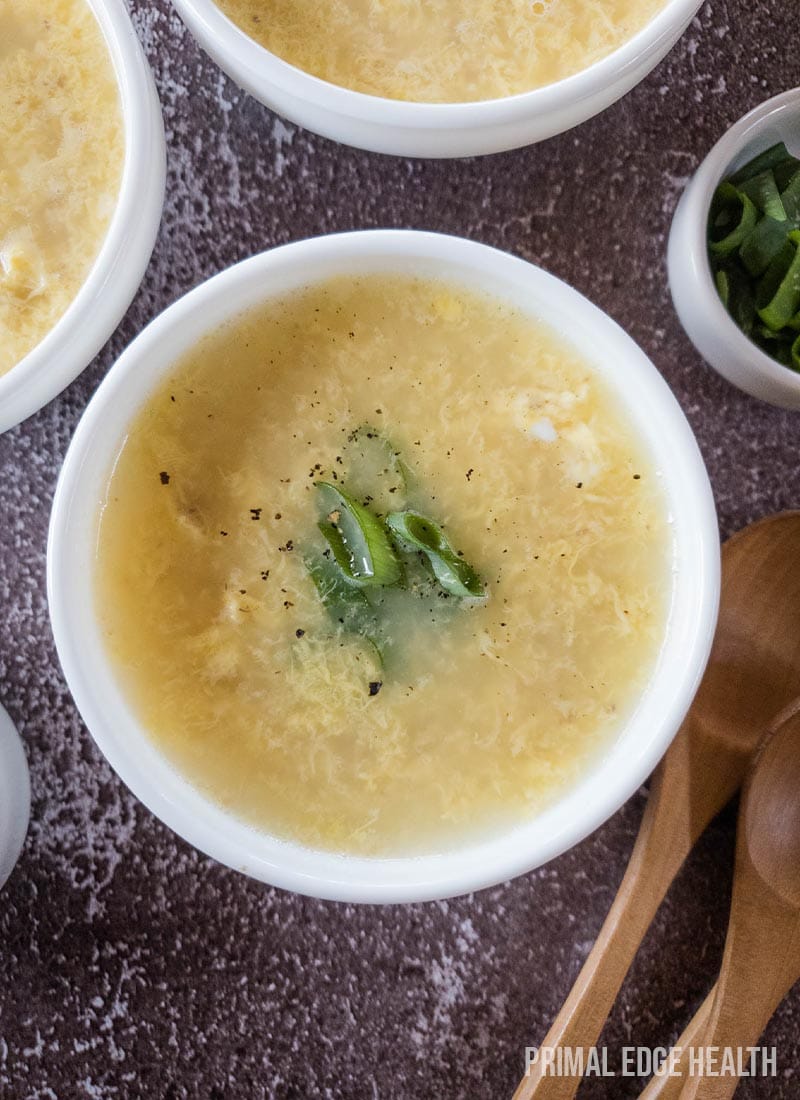
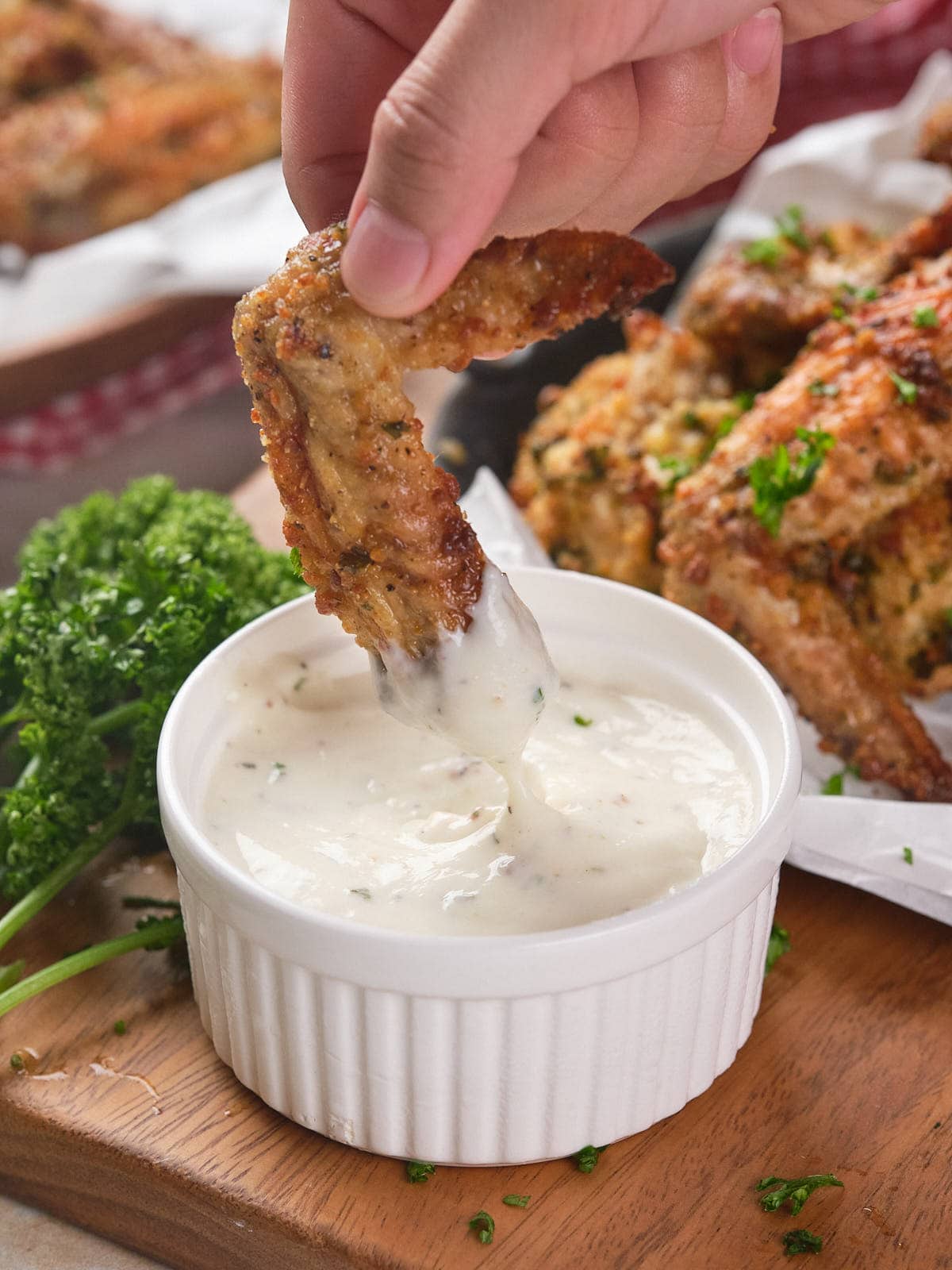
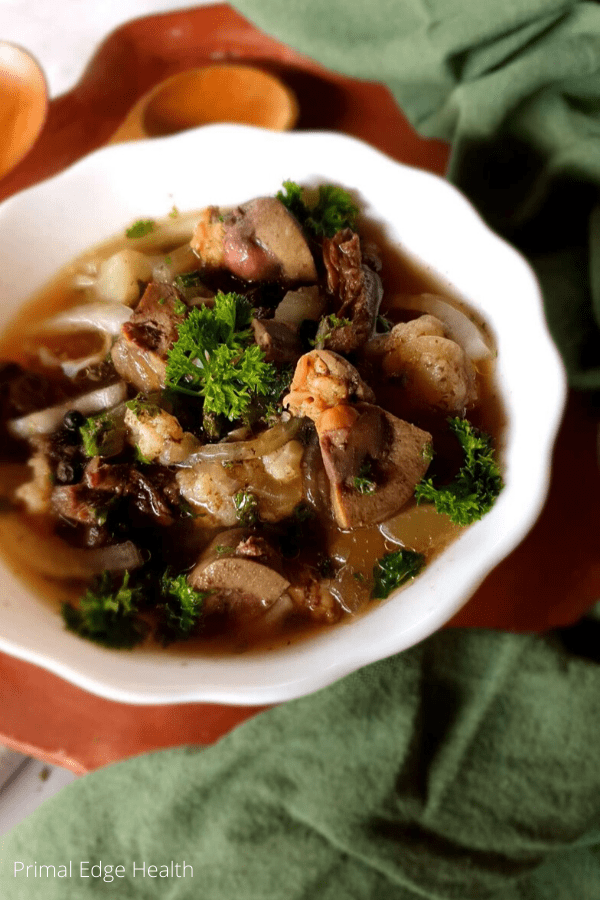

Carnivore Lunch Tips
Personally, lunch is the most challenging meal to plan and prepare. I could eat easy, quick meals for breakfast that usually don’t require any elaborate prep, and for dinner, I have more time to cook for the whole family.
Lunch is a different story. Usually, I need to prepare it ahead of time because I’m working all day and can’t exactly take an hour to cook fresh food. Alternatively, I have to keep recipes simple and quick.
Over the years, I’ve learned a few strategies that make planning and cooking carnivore lunch recipes a breeze. Here are a few that might help you, too.

Diversify Your Meal Plans
No one wants to eat the same rotating meal plan every week. Not only can it get boring, but you might also be missing out on the benefits of diversifying your diet with other foods.
If you’re new to the carnivore diet, I recommend starting with a handful of favorites. Find recipes that you like the most and won’t mind eating a lot of. Then, as you get more and more familiar with carnivore-friendly foods, expand your meal plan with new recipes.
Keep in mind that this process can take a bit of trial and error. Recipes can be a hit or miss, but what’s important is you try as many as you can until you find the ones you can keep in your meal rotation.
Need more ideas? Here’s a 21-Day Carnivore Meal Plan to help you get started.
Reduce Processed Foods
Using processed meat can be an easy option for preparing lunches or even carnivore dinners, but this convenience can come with many health risks. According to the Cancer Council, certain chemicals in processed meats can be carcinogenic, meaning they increase the risk of cancer.
Moreover, a study on the effects of unprocessed and processed meat on cardiovascular health and mortality revealed that higher consumption of processed meat led to a higher risk of major cardiovascular disease (CVD) and mortality. In contrast, the researchers found no strong correlation between unprocessed meat intake and CVD and mortality.
These health risks can be attributed to the high amount of sodium and preservatives (particularly nitrates and nitrites) in processed meat. So, instead of reaching for a pack of hotdogs or canned meat at the grocery, choose something fresh and minimally processed.
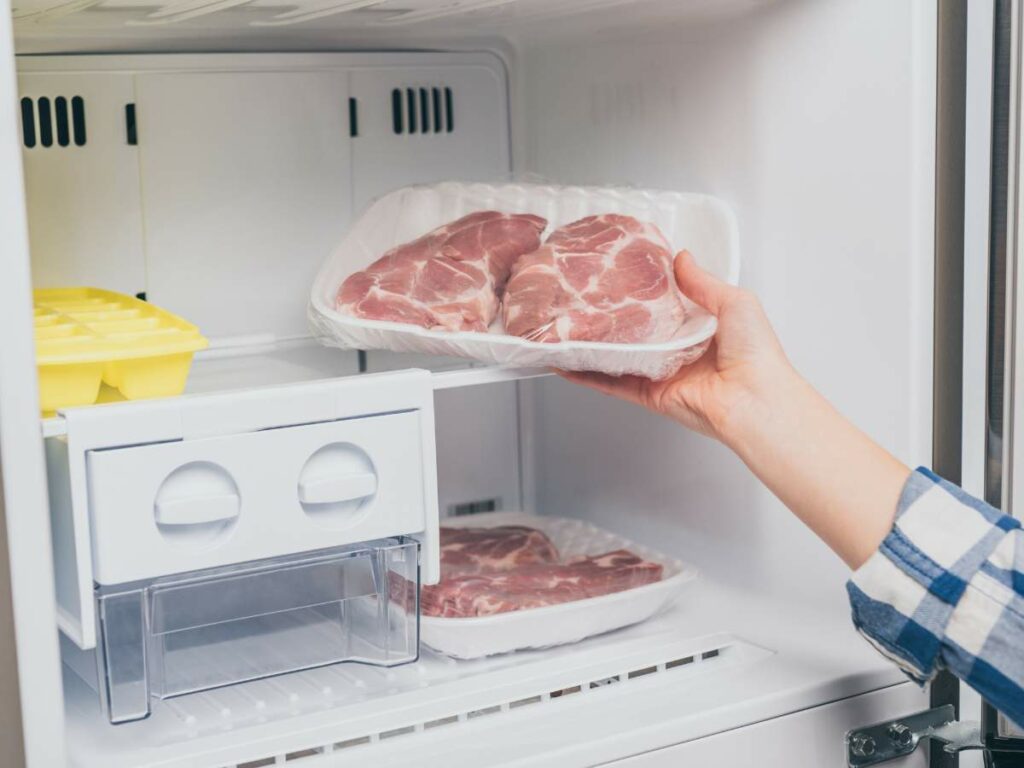
Buy High-Quality Meats
The carnivore diet revolves around meat. Poultry, beef, pork, lamb, fish—you want to diversify your meal plan with as many types of meat as possible so you can enrich your diet with essential nutrients every type of meat has to offer.
But while different types of meat have varying nutritional values, we also have to look at the quality of the meat, which can vary significantly. Meat quality plays a role in nutritional value (primarily fat content), palatability, safety, and storage life.
In general, you can easily use your senses to determine if meat is good quality or not. Beef should be bright red when exposed to air or a darker purplish red when sealed in a bag. If you want a higher fat content, it should have a good degree of marbling.
Pork should be pinkish-red and the fat should be white. Similarly, chicken and lamb should be soft pink without any discoloration. Watch out for any weird colors, such as green, gray, or black.
Next, you can inspect your meat through smell. Of course, any off smell is a red flag. Meat should also be cold to the touch and firm, not sloughy or excessively wet.
Salt Liberally
The Dietary Guidelines for Americans recommend no more than 2,300 mg of sodium per day. For people on a regular diet, limiting sodium intake can help reduce the risk of high blood pressure, stroke, heart attack, kidney disease, and blindness.
However, it might be a different story for people on a carnivore diet. When you reduce your carbohydrate intake, the body responds by burning your fat stores instead of carbohydrates. In turn, your insulin levels decrease because there is less glucose to store in the cells as energy.
Low insulin levels can trigger your kidneys to start excreting sodium and extra water. This is part of the reason why you may experience weight loss and less bloating on a low-carb diet. However, you need to replenish that sodium to avoid symptoms of hyponatremia (low sodium), including nausea, headaches, fatigue, and low blood pressure.
If you’re on a carnivore diet or any very low-carb diet, your doctor may recommend salting your food more than usual to replace your lost sodium. Choose high-quality salts, such as gourmet, sea, or pink Himalayan salt for better electrolyte balance and mineral intake.
Incorporate Organ Meats
Organ meats, also known as offal, are rich in protein, B vitamins, choline, and various minerals like zinc and iron. This nutrient-dense ingredient can be the perfect addition to your carnivore lunch, or perhaps even the main dish. For me, organ meat pie is one of the best make-ahead recipes because it freezes well and has a significant amount of protein.
If you’re iron deficient, organ meats can help improve iron absorption and raise your energy levels during that lunchtime slump. Plus, the vitamins and minerals in organ meats can help boost your immunity and make you less susceptible to infection.
If you have access to it, consider adding bone marrow to your carnivore or keto diet. It’s a great source of fat, calories, and B vitamins.
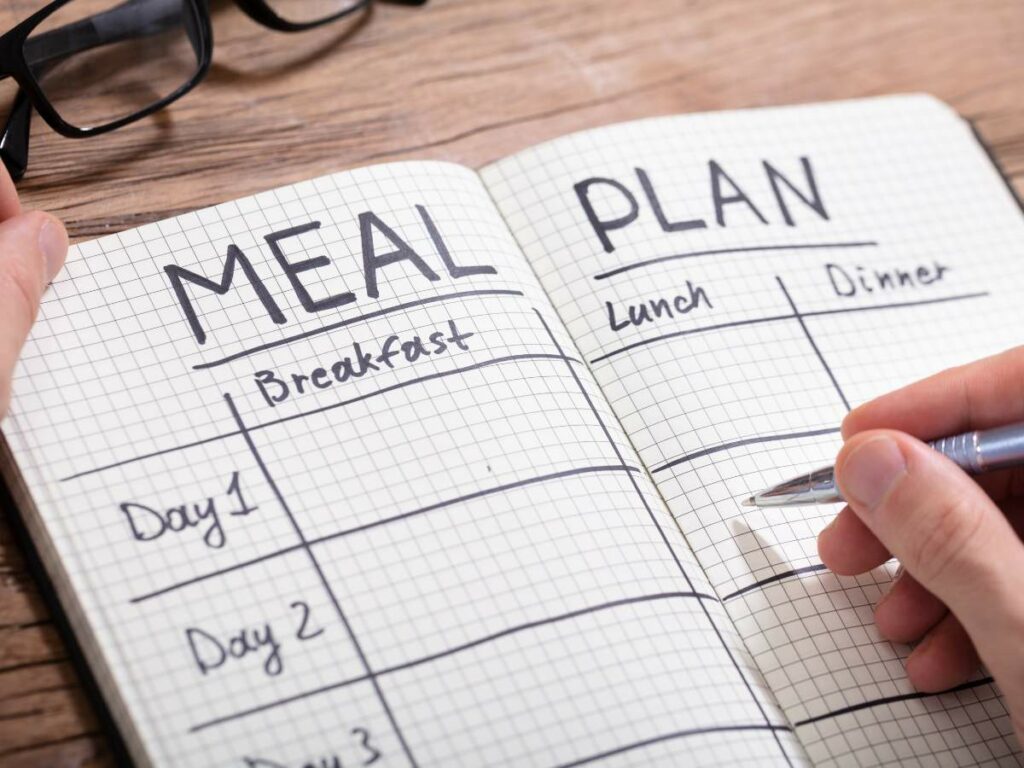
Meal Prepping Tips for Carnivore Lunches on the Go
If you’re a busy person like me, you probably have a limited amount of time for lunch. So, cooking a meal from scratch may be out of the question.
Whether you’re packing lunch for work or making reheatable meals for the week, meal prepping is the solution. Here are a few meal-prepping tips for an all-meat diet:
- Cook a Lot of Your Staples: Cook multiple batches of the things you eat the most. Freeze then thaw at least overnight the day before you plan to eat it. My favorite recipes for batch cooking are carnivore meatballs and carnivore casserole; they freeze well and taste great even after a few days.
- Plan Recipes with Similar Ingredients: Save time and money by choosing recipes with similar ingredients for one rotation. For example, if you want to make meatballs and don’t expect to use all your ground beef, choose another recipe that uses ground beef.
- Be Organized: I highly recommend making a calendar for your meal plan. List down all your recipes for the week and the ingredients you need. It’s a great way to have your shopping, recipe, and meal list all in one place.
- Store Smart: Make-ahead meals, especially meat, retain their quality the best when stored properly. Use airtight containers to keep your food as fresh as possible.
- Eat Time-Sensitive Meals First: Ingredients like heavy cream, cheese, and milk tend to spoil faster. Eat meals that use easy-to-spoil ingredients first before moving on to the more stable ones.
- Use Leftovers: Don’t let your leftovers go to waste. Store any leftover ingredients in the freezer and label them with the date.
Carnivore Diet Shopping Tips
When most people hear about the carnivore diet, they automatically assume that it’s expensive because of the amount of meat and animal products they would need to buy. Yes, meat can be expensive, but if you’re not buying processed foods and high-carb products, the cost can be quite similar to a regular diet.
Nevertheless, a carnivore diet can get pretty costly unless you strategize. Here are my best tips and tricks on how to shop for a carnivore diet on a budget:
- Buy in Bulk: Buying a large quantity of food comes with a high upfront cost but can lead to more savings in the long run. Plus, big box stores like Costco may offer discounts on your favorite meats and other animal products.
- Find a Cow Share Program: With a cow share program, you purchase individual shares of a whole cow upfront, which is similar to bulk buying. It’s cheaper than buying retail cuts and you have better chances of scoring high-quality beef for your meal ideas.
- Go to Your Local Butcher: Butcher shops may offer higher-quality meats for better prices compared to grocery stores. Ask your butcher for affordable options and the best cuts you can buy with whatever budget you have.
- Buy Directly from a Producer: If you live in an area with local ranches and farms, try buying meat directly from the producers. Not only will you support local agriculture, but you’ll also get access to the freshest meat, dairy products, eggs, and other local food.
- Choose Cheaper Options: Some carnivore-friendly foods are more affordable than others. Instead of expensive items like ribeye or T-bone, opt for things like eggs, organ meats, ground beef, whole chicken, lower grades of red meat, and canned fish.
- Repurpose Byproducts: Save money on fat sources by rendering your own beef tallow, saving your bacon grease, or skimming off animal fats from your bone broth. These techniques can help you save money on store-bought fat like butter and lard.
Take Your Carnivore Lunches to the Next Level
Planning and cooking carnivore-friendly meals doesn’t have to be complicated, even if you’re on a strict carnivore diet. With these best practices, shopping tips, and carnivore lunch ideas, I’m sure you’ll start looking forward to your lunch breaks from now on.
Looking for more carnivore recipes and nutrition guides? Explore Primal Edge Health to learn more about improving your health through holistic, intentional, and science-backed approaches.



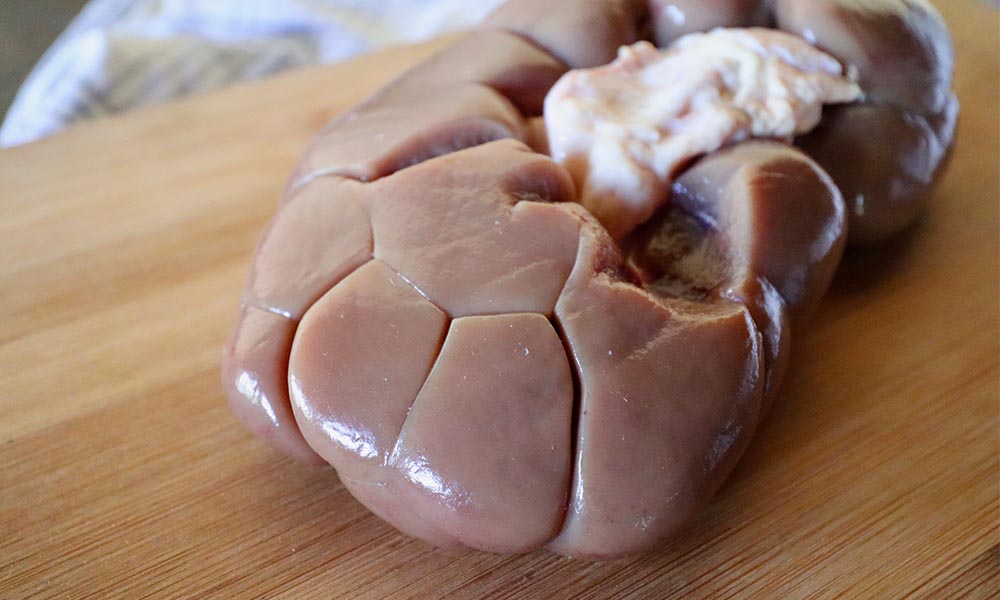
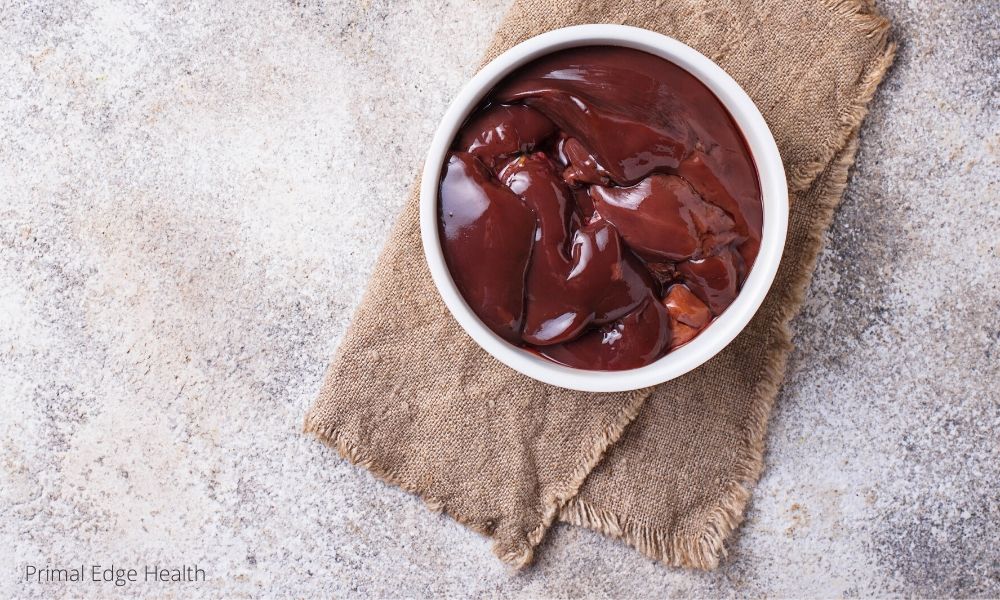
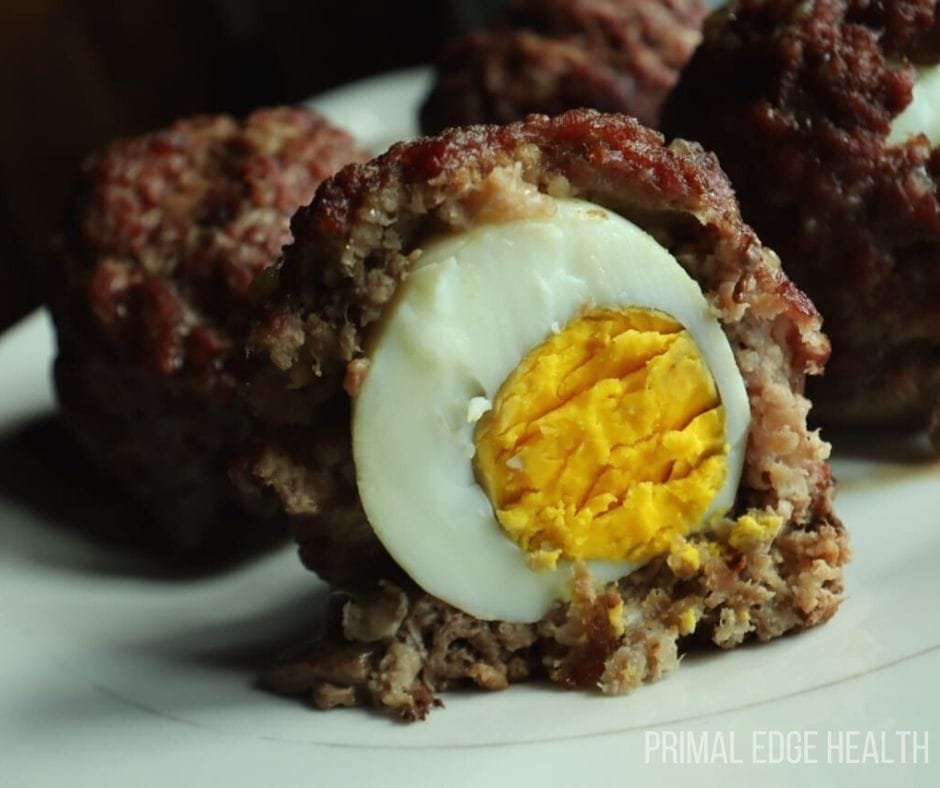
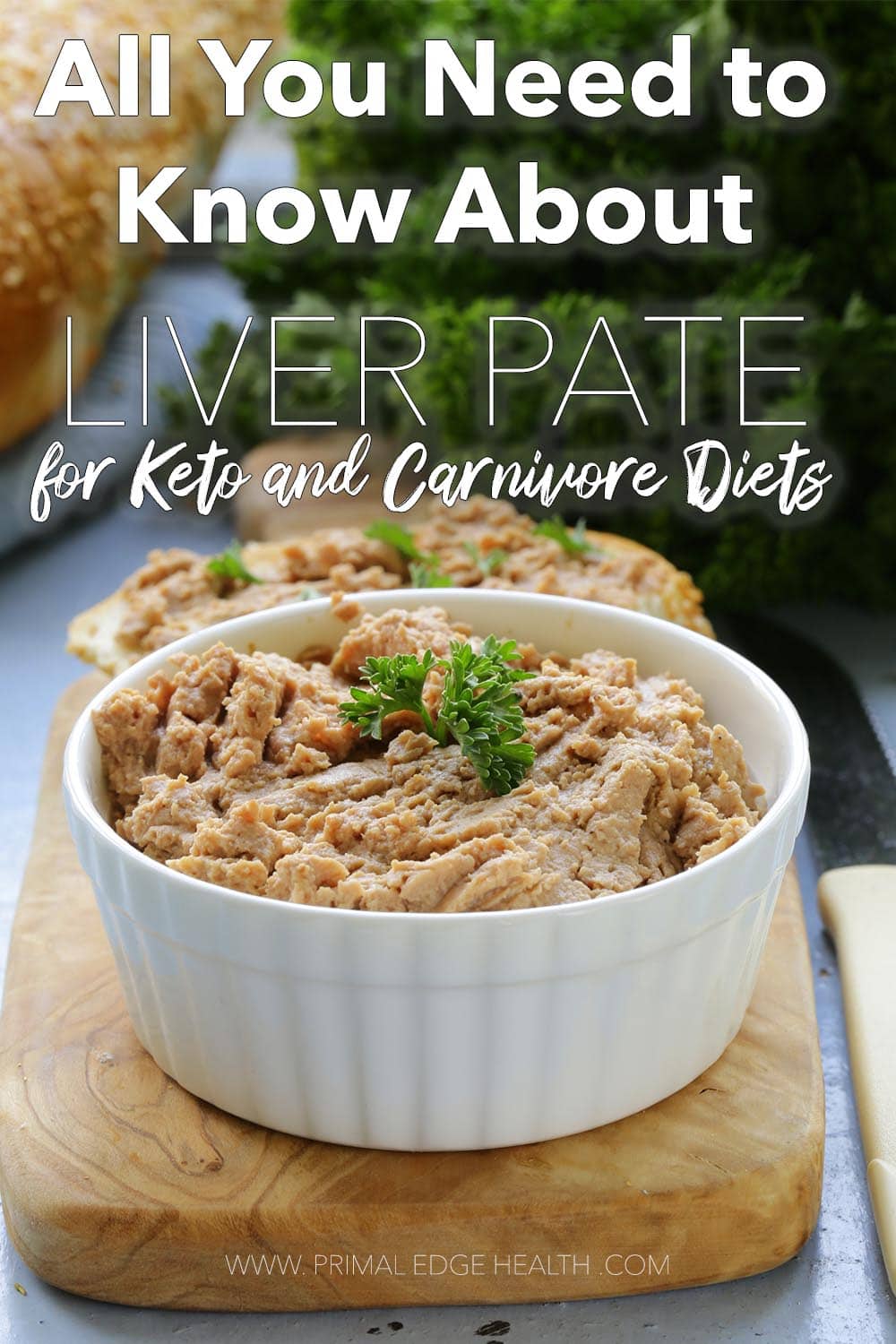
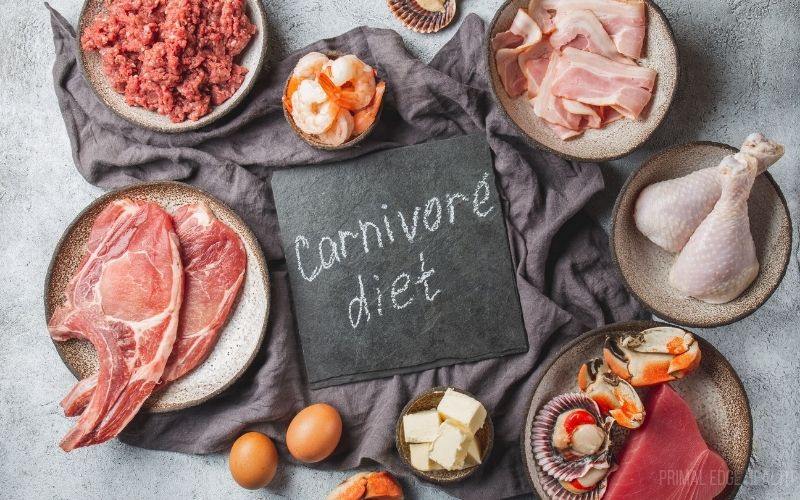
You are SO right about lunch being the hardest meal to get in. You’ve inspired me to make more of an effort to get in a good lunch each day. Also appreciate the tip about adding more salt! TY!